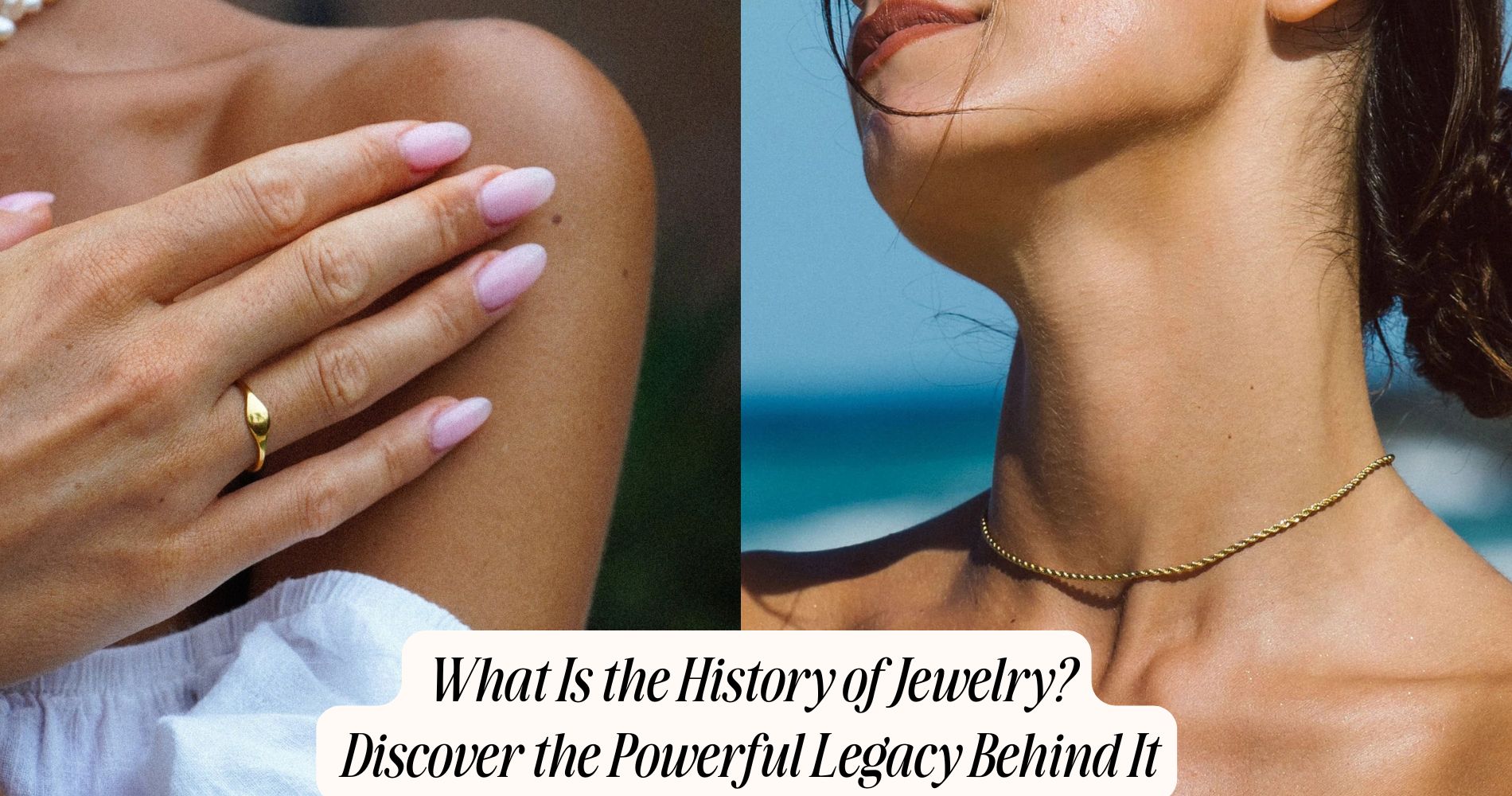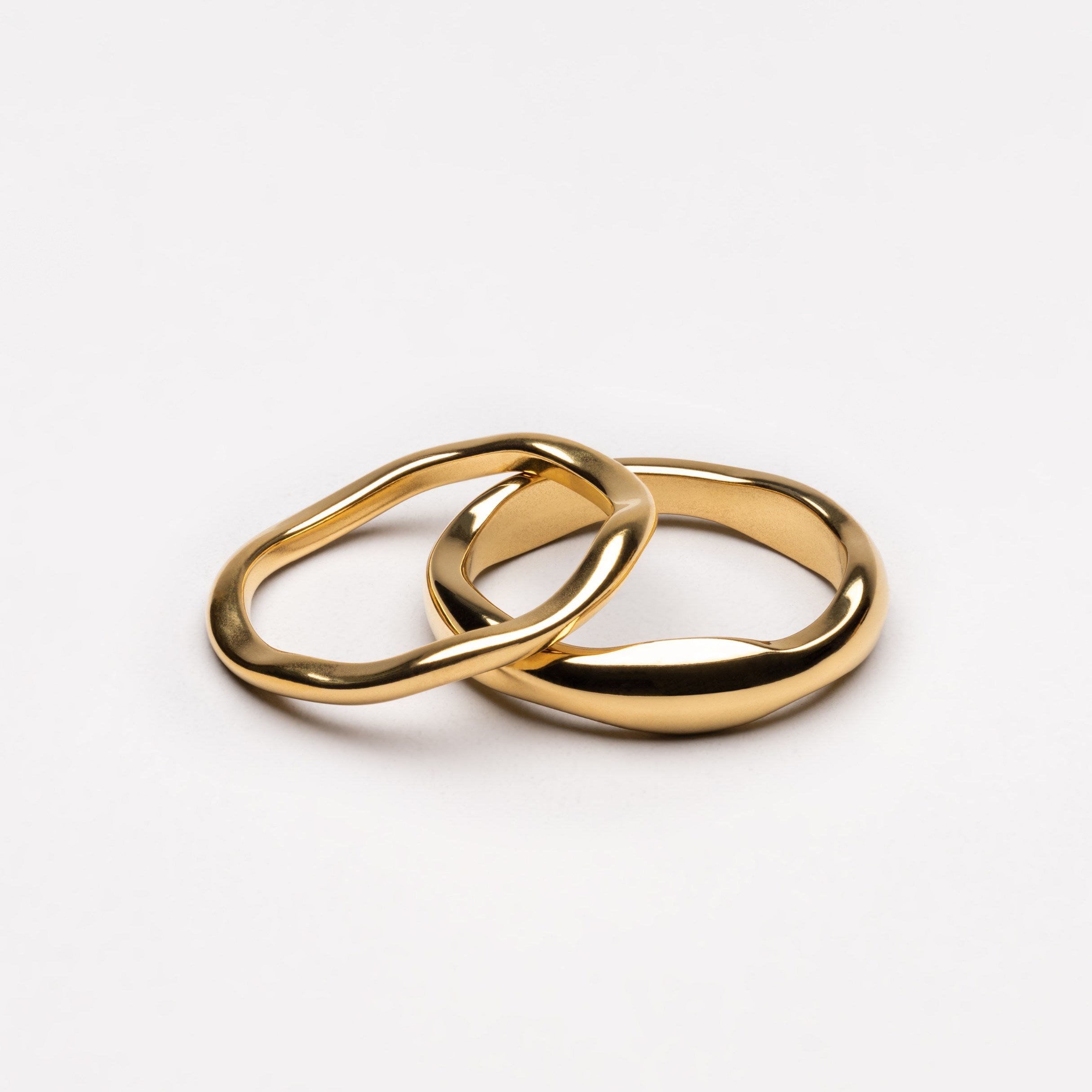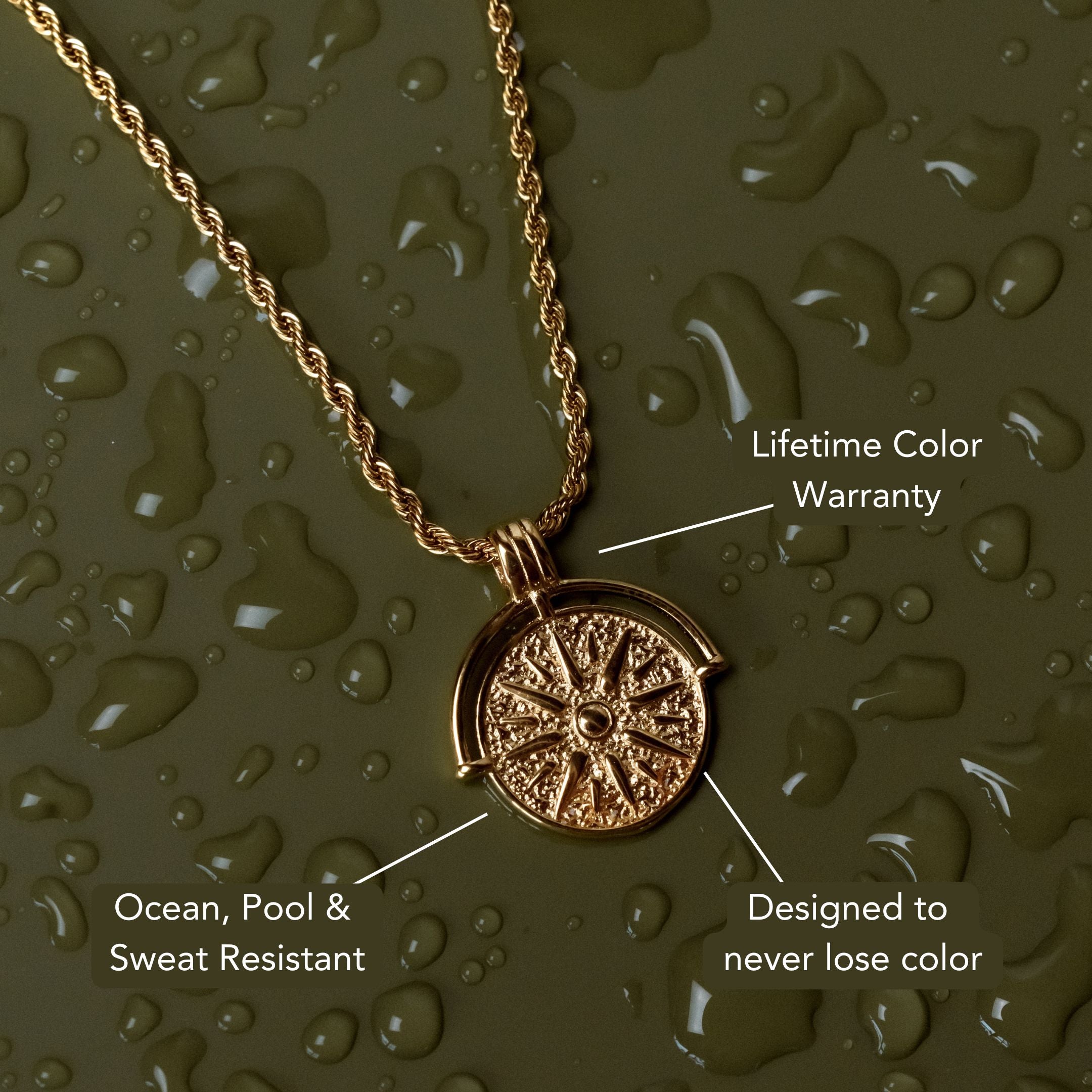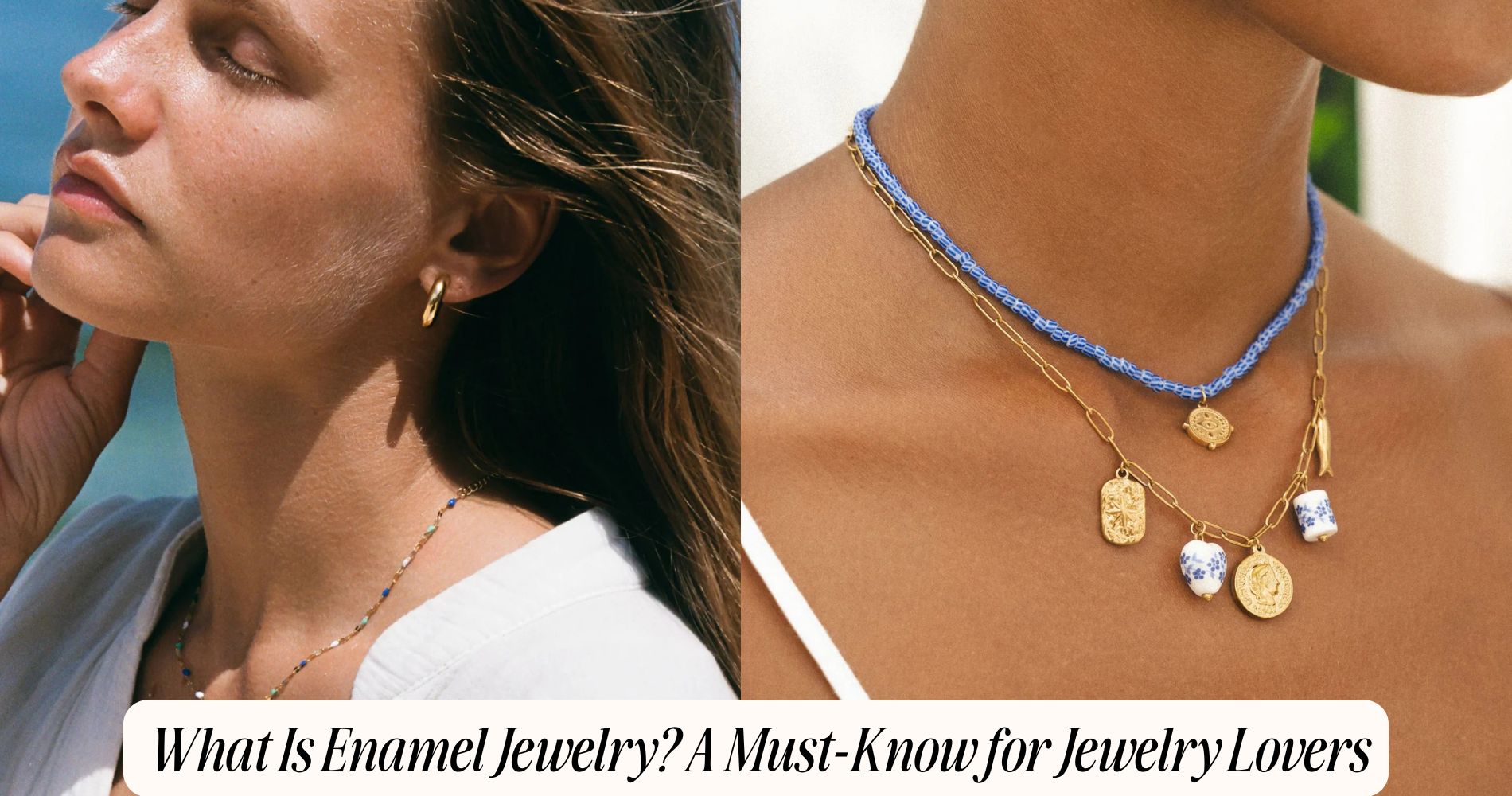
What Is the History of Jewelry? Discover the Powerful Legacy Behind It
What is the history of jewelry? It’s a fascinating journey that begins with prehistoric shells and bones and evolves alongside human civilization. Throughout time, jewelry has expressed identity, spiritual beliefs, and political power. Each era brought its own unique styles and innovations—from the intricate gold amulets of ancient Egypt to the detailed cameos of Rome. Jewelry isn’t just about adornment; it reflects societal values, technology, and faith across thousands of years. Today, you can still see echoes of the past in modern pieces like those in our Minimalist Jewelry Collection.
The Origins of Jewelry in Prehistoric Times
How did early humans first express themselves through adornment? You can trace the roots of jewelry back to the Paleolithic era, when prehistoric adornments signified much more than decoration.
By examining archaeological finds—such as pierced shells, animal teeth, and carved bones—you’ll see evidence of early craftsmanship. These objects weren’t merely decorative; they likely served as symbols of identity, status, or protection within small communities.
When you look closer, you notice the deliberate methods used to shape, drill, and string these materials, revealing ingenuity and intention. Prehistoric adornments provide insights into the cognitive development of early humans and their desire to communicate visually.
Through these artifacts, you witness the emergence of social meaning and personal expression, centuries before written language existed.
Ancient Civilizations and Their Signature Styles
While prehistoric adornments laid the groundwork for personal expression, ancient civilizations transformed jewelry into a sophisticated art form that reflected cultural values, technological innovations, and societal hierarchies.
When you examine Egyptian, Mesopotamian, Greek, and Roman artifacts, you’ll notice how each culture developed signature styles defined by unique materials, techniques, and motifs.
Egyptians favored gold and precious stones, infusing pieces with mythical symbolism—amulets shaped like scarabs or eyes to invoke protection.
Mesopotamians excelled in artistic craftsmanship, using intricate filigree and granulation.
Greek artisans emphasized natural forms and harmonious proportions.
Roman jewelry popularized cameo and intaglio carving.
Jewelry as a Symbol of Power and Status
Across centuries and continents, jewelry has functioned as more than mere ornamentation—it’s served as a tangible marker of power and social hierarchy. When you examine history, you’ll notice that royal adornments—crowns, scepters, and bejeweled regalia—did more than display wealth; they reinforced rulers’ authority and legitimized their positions in societal hierarchy.
If you consider the materials and craftsmanship, owning gold, gemstones, or intricate metalwork wasn’t accessible to everyone. These luxurious items signaled privilege, distinguishing elites from commoners.
Even today, you can see echoes of this tradition, as prestigious awards and honors often involve jewelry-like emblems. By understanding these roles, you gain insight into how jewelry functioned as a visual language of status, power, and identity, shaping perceptions across diverse cultures and epochs.
Spiritual and Protective Meanings Through the Ages
Although jewelry often signified wealth and status, it also held profound spiritual and protective significance throughout history. You'll find that ancient cultures imbued jewelry with meanings extending far beyond ornamentation.
Amulets and talismans, for example, weren't merely decorative—they served as powerful tools to ward off evil, attract good fortune, or invoke divine favor. Ancient Egyptians wore scarab amulets for rebirth, while Mesopotamians crafted cylinder seals with sacred symbols to secure spiritual protection.
Across cultures, sacred symbols—such as the Christian cross, the Hindu Om, or the Eye of Horus—transformed jewelry into objects of faith and power. By wearing these pieces, individuals asserted a connection to the spiritual domain, ensuring personal safety, guidance, or blessings in their daily lives and significant life events.
Innovations in Materials and Techniques
As civilizations advanced, artisans revolutionized jewelry by experimenting with new materials and refining their techniques. You can trace material evolution from simple shells and bones to precious metals, glass, and eventually gemstones. This progression wasn’t arbitrary; it reflected both technological discoveries and shifting cultural values.
Goldsmiths and lapidaries introduced methods like casting, filigree, and stone inlay, each representing significant craftsmanship advancements. With every innovation, jewelry became not just more aesthetically complex, but also more durable and symbolic.
Techniques such as granulation or enameling demanded precision, highlighting the artisan's skill and the society’s appreciation for artistry. By studying these advancements, you see how jewelry functioned as a marker of progress, blending material discovery with creative expression to leave a lasting historical imprint.
Modern Trends and the Enduring Allure of Jewelry
While jewelry’s ancient roots remain visible, contemporary trends reveal a dynamic interplay between tradition and innovation. You’ll notice that modern jewelry design often pays homage to historical motifs, yet it embraces new aesthetics and technologies.
Celebrity endorsements shape consumer preferences, transforming certain pieces into cultural phenomena almost overnight. At the same time, sustainable practices have become central to the industry, prompting you to question sourcing and ethical production.
Eco-friendly materials and transparent supply chains now influence purchasing decisions as much as style or prestige. Social media amplifies these trends, connecting you with designers and global movements in real time.
Ultimately, jewelry’s enduring allure lies in its ability to evolve—melding personal expression, societal values, and centuries-old symbolism into contemporary forms you can wear.
Frequently Asked Questions
How Do You Properly Clean and Care for Antique Jewelry?
When you clean antique jewelry, prioritize antique preservation by using gentle jewelry cleaning techniques—avoid harsh chemicals and ultrasonic cleaners. Instead, use a soft brush, mild soap, and lukewarm water, then dry thoroughly to protect delicate components and settings.
What Are the Most Valuable Gemstones Used in Jewelry Today?
When you assess the most valuable gemstones, you'll encounter diamonds, emeralds, rubies, and sapphires. Analyze their worth using gemstone grading and precious mineral identification techniques, focusing on clarity, color, carat, and origin for scholarly evaluation.
How Can You Tell if a Piece of Jewelry Is Authentic or a Replica?
To determine if jewelry is authentic or a replica, you’ll employ authentication methods like hallmark verification, material analysis, and provenance research. Counterfeit detection often involves expert appraisal, advanced technology, and understanding of historical manufacturing techniques and signatures.
What Careers Are Available in the Jewelry Industry?
You’ll find diverse careers in the jewelry industry, including jewelry design, gemstone sourcing, appraising, manufacturing, and retail. Analyzing trends, managing supply chains, and restoring antiques also offer specialized, scholarly avenues for professionals with varied interests and skills.
How Does Jewelry Appraisal Work and Why Is It Important?
When you seek jewelry valuation, an appraiser uses specialized expertise to assess your piece’s materials, craftsmanship, and provenance. Accurate appraisal protects your investment, informs insurance coverage, and supports resale, making appraiser expertise essential in the jewelry industry.
Conclusion
As you reflect on jewelry's journey, you’ll see it’s always been more than simple decoration. Across eras and cultures, jewelry’s meanings—status, power, spirituality—evolved alongside innovations in craftsmanship. By wearing or studying jewelry today, you connect with a deep legacy of human expression and identity. The enduring allure of jewelry isn’t just about beauty; it’s about the stories, values, and cultural shifts embedded in each piece. You’re engaging with history every time you admire or adorn it.
























Leave a comment
This site is protected by hCaptcha and the hCaptcha Privacy Policy and Terms of Service apply.